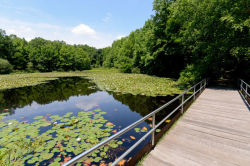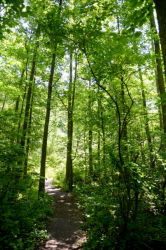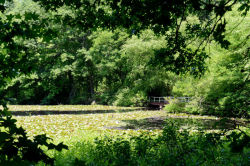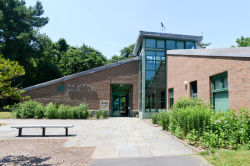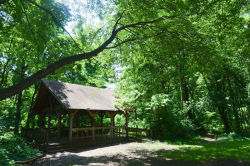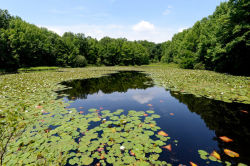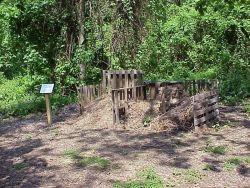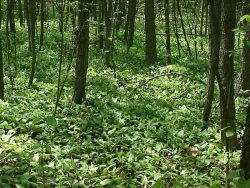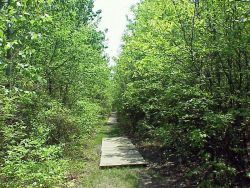Blue Heron Park
Freshwater Wetlands in New York City - Blue Heron Park
New York City once contained 224,000 acres of freshwater wetland. This valuable ecosystem can slow erosion, prevent flooding by retaining storm waters, filter and decompose pollutants, and slow global warming by converting carbon dioxide into oxygen at a prodigious rate. In the past 200 years, the increasing demands of a growing metropolis have resulted in most of this land being filled for construction, or dredged for transport. Only 2,000 acres of freshwater wetland remain in the city today, and many species that once called the wetland home have been lost forever.
Blue Heron Park contains over 200 acres of meadows, ponds, streams, and woodlands. The park features six ponds, including Spring Pond and Blue Heron Pond. The largest pond in the park, Spring Pond is actually a dead tree swamp with stumps protruding from the water. Blue Heron Pond is a more serene wetland with greater wildlife diversity.
The formation of wetlands can be traced back to the most recent ice age. A massive ice sheet called the Wisconsin Glacier advanced on New York City 75,000 years ago, pushing rock, soil, and boulders ahead. When the ice melted 17,000 years ago, water flowed to the sea, creating streams and rivers that carved through rock. Large glacial fragments broke off, melted, and left depressions called kettles. If layers of fine silt and clay were deposited on the bottom of the depressions, the kettles collected water and ponds formed. Where waters were shallow or flowed slowly, seeds and spores were able to take root and flourish. Generations of plants grew and decomposed, building peat-rich sediments. As wind and water eroded the soil, the steep slopes grew gentler, slowing the passage of water. Plant communities diversified under these favorable conditions, attracting animals that fed on the plants. The sophisticated food web that developed brought advanced predators to the wetlands: snapping turtles (Chelydra serpentina), wolves (Canis lupus), several species of hawks, and humans (Homo sapiens).
Water levels in wetlands are variable, influenced by the underlying rock and soil makeup, rainfall, season, and ground water inputs. Despite these variable conditions, freshwater wetlands teem with life. In the summer, Blue Heron Pond becomes thick with swamp loosestrife (Decodon verticillatus). In the spring, the pond’s woody perimeter becomes flooded. Wood ducks (Aix sponsa) nest in the lush vegetation surrounding the pond, while great blue herons (Ardea herodias) and belted kingfishers (Ceryle alcyon) search for food. Raccoons (Procyon lotor) can also be seen foraging along the water’s edge. In addition to housing these native species, freshwater wetlands also provide resting, breeding, and feeding grounds for hundreds of thousands of migrating birds. Many of these birds arrive in New York City only twice a year as they travel along the Atlantic flyway, a major migratory route.
One reason for the pond’s popularity with birds is its proximity to the Field of Ten Thousand Lilies. The field was named by William T. Davis, the famous local naturalist, who was struck by the beauty of the Turk’s cap lily (Lilium superbum). Although that large, drooping flower is now a rarity, bluestem (Andropogon gerardi), switchgrass (Panicum virgatum), common reed (Phragmites australis), goldenrod (Solidago), broom sedge (Andropogon virginicus), and Indian grass (Sorghastrum nutans) add to the meadow’s diversity. Rare plants can also be found in the area, such as striped gentian (Gentiana villosa), nodding ladies’ tresses (Spiranthes cernua), and ragged fringed orchid (Habenaria lacera). Young sweetgum (Liquidambar styraciflua), gray birch (Betula populifolia), catbrier (Smilax rotundifolia), highbush blueberry (Vaccinium corymbosum), pussy willow (Salix discolor), and American hazelnut (Corylus americana) line the field’s edge.
Check out your park's Vital Signs
Clean & Safe
Green & Resilient
Empowered & Engaged Users
Share your feedback or learn more about how this park is part of a
Vital Park System

